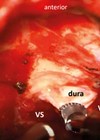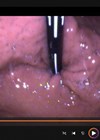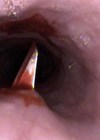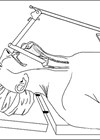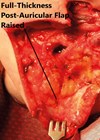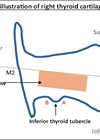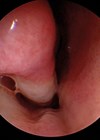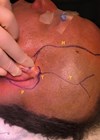How I Do It
Fibre-delivered transoral laser surgery – description of a novel technique
Transoral flexible laser surgery refers to the use of a fibre-delivered laser for laryngeal procedures via direct laryngoscopy. We hear of a novel innovation. The continuous development of instruments to perform endoscopic procedures for treatment of laryngotracheal pathology – among...
In-office management of subglottic and tracheal stenosis: balloon dilation, laser treatment and steroid injection
Laryngology continues to advance since its development as a subspecialty at the turn of the century. Rarely performed operations restricted to the surgical theatre can now be undertaken in the outpatient / office environment. This detailed article demonstrates, in a...
Farewell to Prof Kim Ah-See
Kim Ah-See has been a stalwart member of the ENT & Audiology News team for many years. Since joining as a journal reviewer in 1997 and then taking on the role of How I Do It section editor a decade...
Journal Clubs – The Happy Hour!
Kim W Ah-See is stepping back from his role at the magazine, having first joined as a journal reviewer in 1997. We revisit his first article as How I Do It section editor from 2007. It is with immense pleasure...
Ultrasonic bone aspirators for internal auditory meatus ‘drilling’ in retrosigmoid vestibular schwannoma resection
In this article, the authors describe the retrosigmoid approach to a vestibular schwannoma, using an ultrasonic bone aspirator as an alternative to the standard drill. Vestibular schwannomas (VS) are benign, usually slow-growing tumours of the vestibular nerve. Management of VS...
Transnasal oesphagoscopy
In this useful and practical article, the authors describe their use of transnasal oesophagoscopy, including the range of clinical scenarios in which it is used. What is TNO? Transnasal oesphagoscopy (TNO) is a technique that can be used in the...
Transnasal oesophagoscopy (TNO)-guided secondary tracheoesophageal puncture (TEP) under local anaesthesia
Here, the authors describe a convenient use of the transnasal oesophagoscope to create a new tracheoesophageal puncture in the outpatient clinic setting. Tracheoesophageal puncture (TEP) with voice prosthesis insertion is a reliable and effective technique for surgical voice restoration (SVR)...
Laryngeal endoscopies
Here, the authors provide some great tips for performing a successful microlaryngoscopy which should be of benefit to those learning this very common procedure. In this article, we will discuss tips for performing a microlaryngoscopy, and different laryngoscopes used to...
Mastoid fistula closure
This article describes a clear and useful technique for the repair of a troublesome mastoid fistula. The clear instructions make this easy to apply in daily practice. Mastoid fistula is a rare condition whereby an abnormal connection develops between a...
Type 1 thyroplasty using a novel and inflatable implant from APrevent® VOIS
Unilateral vocal cord immobility severely impacts voice, swallowing, and airway functions. A novel approach offers adjustable medialisation for improved patient outcomes. Unilateral vocal cord immobility (UVCI) can cause significant disability to voice, swallowing, and airway functions. Patients with UVCI may...
Endoscopic ‘syringe and cutdown’ technique for nasolacrimal duct obstruction in children
This article presents a novel yet simple technique to help in the management of congenital NLDO. The authors propose it as a valuable addition to existing standard procedures. Congenital nasolacrimal duct obstruction (NLDO) is a condition encountered within the first...
Temporoparietal fascia flap for blind sac closure
Chronic ear disease can be challenging to manage and difficult for patients to live with. In this article, the authors describe their technique for otomastoid obliteration and blind sac closure of the external canal allowing for a more tolerable situation...






